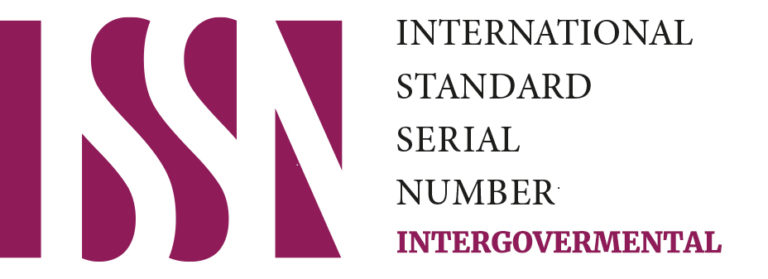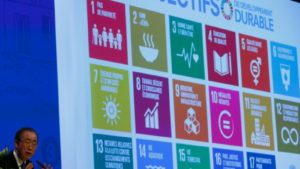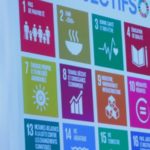ABSTRACT
| Food security remains an urgent and multifaceted challenge, particularly in the developing world, where it intersects with conflict, poverty, and anthropogenic climate change. This paper explores how food insecurity is both a cause and consequence of geopolitical instability, exacerbated by war, ethnic marginalization, socio-economic inequality, and the politicization of humanitarian aid. While food access is increasingly recognized as a human right, the manipulation of food systems for political or economic gain undermines this recognition and efforts to combat food insecurity. The failure to address structural and environmental causes, such as unequal trade practices, resource scarcity, and climate-induced displacement, limits the effectiveness of traditional food aid strategies. Using recent examples from the Global South, the paper argues that food insecurity is not incidental but a predictable outcome of short-sighted policies that neglect community-level investments needed for sustainable health outcomes.
This study evaluates the efficacy of modern food security treaties through the lens of the Global Food Security Index (GFSI). Successful partnerships demonstrate the importance of complementarity, sustainability, and local empowerment in treaty design. Conversely, agreements driven by donor interests or lacking transparency can limit or worsen outcomes. Health consequences, especially among vulnerable populations, underscore the broader social cost of inaction. The paper concludes that enduring solutions require integrated frameworks that address trade equity, climate resilience, and infrastructure development; Prioritizing local needs and long-term stability over short-term interventions or market-driven agendas. |
|
1. Background
Food security remains one of the most critical and under-addressed issues of our time, particularly as it applies to the global south and developing nations.[1] Not merely as a matter of agricultural efficacy, but as a central factor in geopolitical stability, community resilience, and human dignity. Food security, at its core, is the ability for a group or class of people to reliably access sufficient, safe, and nutritious food to meet their general dietary needs.[2] In many regions, however, this basic condition, and human right, is persistently neglected. The issues surrounding food security, or insecurity, are complex, often overlapping with violent conflicts and socio-political inequality, typically creating cycles of self-perpetuating instability, which give rise to patterns of chronic malnutrition, economic stagnation, and social unrest. The scarcity or manipulation of food resources is not a crisis of chance, but instead is often an outcome of policy, conflict, and the ever-growing impact of anthropogenic climate change; Each compounding the fragility of vulnerable populations.[3] [4]
The relationship between food insecurity and conflict is recursive and mutually reinforcing. Regions suffering from protracted warfare, such as the ongoing Sudanese civil war and the Israel’s invasion of Palestine, demonstrate how the weaponization of food, through strategic blockades, restricted aid, targeting of humanitarian workers, and destruction of agricultural infrastructure, can devastate civilian populations and prolong these cycles of conflict.[5] [6] Conversely, the inability to access stable food sources often contributes to unrest, mass migration, and the radicalization of these disenfranchised groups. In this way, food insecurity becomes both a symptom and a catalyst of broader geopolitical instability, and any sustainable peace initiative must address access to food as a core component.
Furthermore, food insecurity presents a profound humanitarian dilemma that transcends state borders and traditional notions of sovereignty. This is reflected in the United Nations’ near-unanimous vote to declare water and food as a human right in 2021. Though water rights had broader dissent, most troubling, the right to food was only opposed by the United States and Israel.[7] The ethical imperative to prevent famine and starvation is frequently secondary to political interests, leaving aid corridors blocked and logistical support politicized. Going further, the mistreatment of communities or ethnic groups are often the aim of these political interests, and in the extreme, they promote the genocide or ethnic cleansing of a region or demographic.[8] [9]
When possible, multilateral frameworks are employed to address multiple variables that contribute towards food security and the eradication of hunger, yet implementation of consistent strategies remains inconsistent and fragmented, typically due to political polarization on how aid is implemented and distributed. This issue is particularly relevant in the wake of the United State’s withdrawl of USAid funding during the current administration, undermining food security programs (as well as many other programs relating to healthcare and education, which heavily intersect with food security) that an untold amount of communities and peoples relied on, inevitably contributing to growing geopolitical instability, a weakening of democratic institutions and trust in aid programs, the continued growth of illiberal powers to influence said regions, and most importantly, the humanitarian losses and suffering which is ensuing.[10] [11]Additionally, as anthropogenic climate change continues to alter global weather patterns, impacting agricultural zones tied to rain, humidity, and ecosystems, the viability of certain crops is continuously called into question. These climatic shifts slowly but surely drive the displacement of peoples, particularly rural communities who are most at risk, not only in developing nations but in the United States and across the globe.[12] [13] Diminishing water supplies, the urgency to integrate food security into foreign policy, humanitarian aid, and adaptability to our changing climate is no longer optional, it must be structural, built into how we engage with one another on the local and international stage.
2. Lessons from Food Diplomacy
Modern food security treaties and initiatives have achieved mixed results, with notable successes when considering localized coordination, yet consistent failures in addressing the systemic origins of food scarcity. The United Nations World Food Programme (WFP), for instance, has effectively delivered emergency food aid to millions, demonstrating logistical agility and global support.[14] Similarly, the Comprehensive Africa Agriculture Development Programme (CAADP), administered by the African Union, has led to some improvements in state-level policy coordination and investment in agricultural infrastructure.[15] These efforts illustrate that targeted intervention can yield measurable results when aligned with local governance and international support.
However, many food security frameworks fail to address the structural inequalities and political dynamics that perpetuate vulnerability. The reality is, these programs only have so much leeway in how they address these issues, and are often constrained by the socio-political and military realities they must navigate, often minimizing rhetoric and policy intervention in exchange for greater access to help the most in need.[16] Indeed, when nations perceive aid organizations as overstepping their bounds, they are typically excluded from further actions, or at worse, targeted with violence themselves.
Systemic shortfalls are often recurring issues as well. For example, the G8’s L’Aquila Food Security Initiative of 2009 promised $22 billion in aid to support agricultural development. While many partnerships stemming from this initiative have found success, broader goals regarding funding and combating hunger have fallen short, in regard to both transparency and delivery, namely due to disbursed funds lagging far behind commitments.[17] [18] Similarly, trade-based agreements under the World Trade Organization have prioritized market liberalization at the expense of small businesses and rural community protections, exposing developing nations to volatile price shocks and dependency on food imports that were integral to these kinds of programs, demonstrating how private interest can infiltrate and undermine humanitarian efforts.[19] While there can be value in the liberalization of markets, the socio-political realities of those market shifts must be considered before potentially destabilizing and undermining local economies. These failures highlight a core disconnect between macroeconomic policy and the lived experiences of rural food producers and consumers.
More critically, contemporary food security strategies often ignore the ecological and political foundations of the crisis. Agreements tend to focus on short-term distribution and emergency response rather than the population’s general access to food, safety, water rights, socio-economic inequalities, and the impacts of climate-induced crop failures. The 2021 UN Food Systems Summit, while ambitious in scope, was criticized for being dominated by corporate actors and sidelining the voices of people suffering from food insecurity and subsistence farming communities.[20] Over a century of failed trickle-down economic policy should be more than enough to prove the importance of investing in local producers and infrastructure.[21] [22] Unfortunately, even in the face of starvation, corporate interests seek to exploit crises for profit, historically exacerbating the issues and capitalizing on inequalities through the guise of charity and partnership.[23]
Food security will continue to elude large portions of the global population until policy frameworks confront the entangled forces of poverty, climate, conflict, and political marginalization as integral to the problem, not merely the peripherals. Through selected case studies of food security agreements and related treaties, it is the hope of this paper to illuminate some avenues to better deconstruct the issues at hand and better cater to those most in need.
3. Health Impacts of Food Insecurity
It is no secret that plentiful access to healthy food improves overall health outcomes in people; research has shown this time and time again, and it is a pretty intuitive concept. A common complaint from those in developed countries is that it is cheaper and more filling to eat a burger than the ingredients they could afford to make a salad at home. The same can be said for those in developing countries; It is more sustainable currently to eat staple foods, such as grains and root vegetables, or highly processed foods imported from other countries, than to sustain a varied diet. These concerns are not merely complaints about food availability, but have serious impacts on the health of communities, and have real measurable impacts on health outcomes and systemic challenges faced by not only Americans, but peoples across the world.[24] This is partially due to the cost accessibility to ingredients needed for a varied diet.
As of 2023, there are an estimated 2.23 billion people in the world who are considered to be moderately or severely food insecure, and this is likely an underestimate.[25] Beyond being food insecure, roughly 2.8 billion people in the world cannot afford a healthy diet, which as discussed, is often considered a form of food insecurity as well. In developed nations, such as the United States, food insecurity is often linked to obesity and other chronic health conditions in those between the ages of 18 and 65. It was also found that food-insecure children in the United States are at an increased risk for obesity and other negative health outcomes, including developmental problems. It is even seen that food insecurity can impact children’s mental health.[26]
Considering the challenges already faced by developed nations in terms of food security, imagine the impacts of food insecurity in developing nations where resources are even more scarce, and the everyday stressors of life are far worse? It should come as no surprise that these issues compound with one another, exacerbating cycles of poor health, malnutrition, violence, and poverty.[27] Food insecurity is also a cause of premature death and decreased life span. One study found that food insecurity has a more significant impact on the life span of women, who often play outsized roles in childcare and community engagement. The same study also found that food insecurity decreased the average lifespan by 2.5-4.5 years by the age of 50. Of the deaths surveyed, 27.1% were due to cardiovascular disease.[28] Many other studies have reaffirmed that cardiovascular disease can be linked to food insecurity, as both a product of poor nutrition and as a byproduct of the socio-economic conditions associated with the lifestyles forced upon people in these disenfranchised communities. A USDA study found that cardiovascular disease was six times more prevalent in food-insecure households.[29]
Beyond the fact that all nations want their people to be healthy in general, unhealthy citizens results in fewer workers being able to contribute to the economy and to furthering the food security of the nation itself, which is why trade agreements focused on these issues are so important to helping developing countries, as they would likely continue to suffer the negative consequences of food insecurity without the support of other nations.
4. Global Food Security Index
In the pursuit of global food security, international trade agreements have emerged as a vital tool for building agricultural resilience, increasing production, and reducing hunger. However, not all treaties are created equal. While some partnerships have led to measurable improvements in food availability and sustainability, others have faltered. Here we examine several trade agreements between developed and developing nations, identifying why some partnerships succeeded while others did not. Specific patterns are apparent when assessing these arrangements, with more and less successful treaties and the related variables discussed. These factors are demonstrated through the case studies presented in the following sections. The success of a treaty will be defined by an improvement of an overall score on the Global Food Security Index (GFSI), whose scoring focuses on three main attributes to food security; Affordability, availability, and quality and safety. These indicators are informed by credible data sources, including international organizations and national statistics, and are regularly updated to reflect current global challenges such as climate change, economic instability, and geopolitical disruptions.[30]
Scoring of affordability focuses on the consumers’ ability to purchase food, resilience to price shocks, and the presence of safety-net programs. This includes indicators like food consumption as a share of household expenses, GDP per capita, poverty rate, tariffs, and social protection measures. Availability scoring assesses national capacity for domestic food production, supply resilience, and infrastructure to deliver food to market. Indicators include average food supply, volatility of production, trade freedom, access to finance, and rural infrastructure. Quality and Safety measurement evaluates the nutritional profile and safety of average diets. This covers dietary diversity, protein quality, sugar consumption, food safety legislation, and food loss. The weighted average of the three scores makes the overall score. GFSI’s scoring system is based on a 0–100 scale, where 0 represents the least favorable conditions for food security and 100 the most. Nations facing severe food insecurity may score in the 30 or 40 range, while top-performing countries often score in the 80 and above. These scores are unitless, as it is formed from the normalization of other real world indicators, such as GDP, poverty rate, food cost, etc; that are then formed into a composite score.
The GFSI developed by Economist Impact, is a reliable source of information because it offers a comprehensive, evidence-based assessment of food security across 113 countries using a transparent and rigorously designed methodology. Furthermore, the GFSI is developed in consultation with subject-matter experts, ensuring its relevance and accuracy. Its balanced approach, combining economic, agricultural, environmental, and health-related factors, makes it a trusted tool for policymakers, researchers, and global development agencies seeking to understand and address food insecurity at both national and global levels. Finally, unlike measures that focus only on hunger or malnutrition, the GFSI provides a holistic assessment of the drivers of food insecurity, which makes it a good tool to assess the success of a treaty’s impact on food security.[31]
- Strategic Partnerships, Complementarity, and Liberalization
A successful food security trade agreement follows the old adage, “Give a man a fish, you feed him for a day. Teach a man to fish, and you feed him for a lifetime.” The most important thing trade agreements can do to help developing countries achieve sustainable food security, is to provide them with the infrastructure and technology required for sustainable agricultural livestock cultivation. This includes working with local communities to cater to their strengths, developing a plan that will work most successfully for the partnered communities, and thus, the nation at large. Initiatives that create a top-down solution where the developing nation is wholly dependent on a senior partner or corporate investments, ultimately do more harm to communities than good; This subject will be expanded upon later. Trade agreements involving community-level investments, small business development, and a focus on knowledge and resource sharing, have all demonstrated measurable improvements in food security through a shared emphasis on sustainability, technological transfer, and market development.
Trade agreements between the Netherlands and Kenya, India and Malawi, and Canada and Vietnam have all demonstrated measurable improvements in food security through a shared emphasis on sustainability, technological transfer, and market development. In 2012, Kenya and the Netherlands partnered on end-to-end agricultural development, from production to marketing, backed by evidence-based policies and private sector financing. The initiative emphasized complementarity by providing what Kenya lacked: Infrastructure, financing, and sustainable practices, rather than flooding the market with foreign imports.[32] Since the treaties enactment Kenya’s food security index score has risen over ten points per the GFSI scale. The areas that can be attributed to this increase in score are in agriculture producer prices, empowering women in farming, food security strategy, nutrition standards, and protein quality where Kenya scores well above the average of the nations included in the study.[33]
Similarly, India’s 2008 partnership with Malawi combined liberalized trade access with a $163 million line of credit. The initiative’s success stemmed from empowering local farmers with technology and skills, rather than creating dependence on Indian imports.[34] [35] After a decline in food security which can be attributed to political upheaval in Malawi between 2012 and 2013 the country has increased in its GFSI score by nearly twenty points. This can be most contributed to access to agricultural technology, education, and resources, commitment to innovative technologies, volatility of agricultural production, sufficiency of supply, food security and access policy commitments, nutritional standards, and micronutrient availability.[36]
Finally, Vietnam’s dual agreements with Canada and South Korea were built on existing agricultural trade strengths, especially in fisheries and livestock. These agreements reduced tariffs, promoted reciprocal market access, and involved extensive private investment.[37] These efforts complemented Vietnam’s economic needs and development goals, with some ebbs and flows these trade agreements resulted in so far a two point gain per the GFSI scale. This gain of points can be attributed to improvements in food costs, increased trade freedoms, reduced tariffs, food safety net programs, complementary agricultural products, sufficiency of supply, dietary diversity, nutritional standards, protein quality, and food safety.[38]
6. Opaque, Insular, and Socio-Politically Blind
In contrast, several trade efforts, particularly those involving Germany and West African nations (Ghana and Nigeria), have not demonstrated the same success, with some arguably worsening food insecurity. Despite noble intentions, these agreements relied heavily on public-sector development agencies like GIZ and focused on agribusiness training and loan access rather than direct support for production or trade liberalization.[39] [40] [41]
In Ghana, criticism has centered on the lack of transparency and measurable outcomes, with little evidence that training programs translated into increased yields or food access, in fact they have fallen by two points according to the GFSI.[42] Similarly, in Nigeria, the promise of easier loan procurement and agribusiness support has not overcome structural issues, such as political instability and weak infrastructure. Nigeria has similarly fallen by at least two points in the GFSI. This decline in points can be attributed to many things, but most particularly can be attributed to worsening food costs, supply chain infrastructure, nutritional standards, and food safety due to geopolitical conflicts in the region.[43] Though it must be said that in the prior case with Kenya, it too neighbors various conflict zones, yet the focus on sustainability and autonomy of food production has proven resilient in contrast.
Finally, Saudi Arabia’s investment in Sudan highlights how food security treaties can backfire when driven mainly by external interests. While Saudi-owned companies sought to secure their own food supply by producing in Sudan, much of the produce was exported, not used to feed Sudan’s population. The outbreak of civil war further undermined local food systems, worsening famine.[44] Before the outbreak of the 2023 civil war, the GFSI score for Sudan was actually improving, however lack of a stable infrastructure, compnded by all out war, has led to a famine; While the failings of a treaty can not be associated with this conflict, the lack of resilience in the partnerships headed by Saudi Arabia are apparent. Areas in which Sudan was improving include agricultural research and development and sufficiency of supply. At the time of the GFSI study, the areas Sudan scored lowest in include political and social barriers to access, supply chain infrastructure, food safety net programs, agricultural trade, and food safety. Looking at these details, it is not hard to understand why a country that was improving in its food security fell so quickly to famine after the renewed civil war.[45]
7. Summary and Conclusion
The positive examples discussed include partnerships between the Netherlands with Kenya, India with Malawi, Canada and South Korea with Vietnam, which all saw boosted GFSI scores by empowering local farmers, increasing access to technology, reducing tariffs, and strengthening trade. These treaties enhanced food resilience through infrastructure development, sustainable agriculture, and reciprocal trade relationships.
By contrast, treaties that focus narrowly on training, fail to align with local food needs, and are overly extractive in nature often fall short or exacerbate food insecurity. As global food systems face increasing pressure, strategic, well-aligned trade partnerships will be critical for securing sustainable food futures. Treaties that failed, or saw limited success, such as those involving Germany with Ghana and Nigeria, and Saudi Arabia with Sudan, lacked transparency, were overly reliant on public-sector agencies, or prioritized foreign benefit over local food systems. Political instability and civil conflict further worsened outcomes in countries like Sudan, despite early signs of progress, reflecting how short-term improvements can be misleading in the scope of long-term sustainability.
Using the Global Food Security Index (GFSI) as a metric for success, we were able to determine successful trade agreements focusing on food security and the areas where they have improved food security in the developing countries overall. The most effective food security treaties are those that emphasize complementing rather than competing with existing domestic production, engaged in sensible promotion of trade liberalization, reduction in tariffs, enable local farmers to access broader markets, and leveraging private-sector investments and partnerships with local businesses that prioritize scalability and measurable outcomes, rather than relying solely on public programs or corporate handovers of production.
8. Conflict of Interest
The authors state that there is no conflict of interest.
References and Footnotes
Alam, Kazim 2025. “Gaza aid blockade foretold: Only US and Israel voted against UN move to make food a human right.” TRT Global. Accessed July 1 2025. https://trt.global/world/article/5c127f78e6f6
Arndt, H.W. 1983. The “trickle-down” myth. Economic Development and Cultural Change, 32.1.
Babaker, Saif al-Yazel 2018. “New Saudi Investments in Sudan’s agriculture.” Farmland Grab. Accessed July 1 2025. https://www.farmlandgrab.org/post/28612-new-saudi-investments-in-sudan-s-agriculture
Benin, S. 2014. Aid effectiveness: How is the L’Aquila food security initiative doing? SSRN.
Brown, R. 1984. The Relationship between the State and the Multinational Corporation in the Exploitation of Resources. International & Comparative Law Quarterly, 33.1.
Buch, L., Alvarado, A., Oo, T., Salman, I., Hauber, C., Dutka, P. and Martirosyan, D. 2023. The Impact of food deprivation and starvation on mental health: Blockade on Artsakh (Nagorno-Karabakh). Functional Food Science-Online, 3.8.
Buchkovska, K. 2023. The USA Development Policy as a key instrument of the American Foreign Policy- “Soft Power” and the role of USAid. Vizione, 41.
Chang R, Javed Z, Taha M, Yahya T, Valero-Elizondo J, Brandt EJ, Cainzos-Achirica M, Mahajan S, Ali HJ, Nasir K. 2021. Food insecurity and cardiovascular disease: Current trends and future directions. American Journal of Prev. Cardiol.
Chung, G.K.K., Dong, D., Wong, S.Y.S., Wong, H. and Chung, R.Y.N. 2020. Perceived poverty and health, and their roles in the poverty-health vicious cycle: a qualitative study of major stakeholders in the healthcare setting in Hong Kong. International journal for equity in health, 19.
Clapp, J., Noyes, I. and Grant, Z. 2021. The food systems summit’s failure to address corporate power. Development, 64.
Comprehensive Africa Agriculture Development Programme 2025. “The CAADP Results Framework 2015-2025.” African Union Commission. Accessed July 1 2025. https://au.int/sites/default/files/documents/41425-doc-31250-doc-the_caadp_results_framework_2015-2025_english_edited_1-1.pdf
Concern Worldwide US 2025. “World hunger facts: What you need to know in 2025.” Concern Worldwide US, INC. Accessed July 1 2025. https://concernusa.org/news/world-hunger-facts/
Deller, S., Canto, A. and Brown, L. 2020. “Food access, local foods, and community health.” Local Food Systems and Community Economic Development, Routledge, pp. 49-72.
Drewnowski, A. 2022. Food insecurity has economic root causes. Nature food, 3.8.
Economist Impact 2025. “The 11th Global Food Security Index shows a deterioration in the global food environment for the third year, threatening food security.” The Economist Newspaper. Accessed July 1 2025. https://impact.economist.com/sustainability/project/food-security-index/
Economist Impact 2025. “Ghana.” The Economist Newspaper. Accessed July 1 2025. https://impact.economist.com/sustainability/project/food-security-index/explore-countries/ghana
Economist Impact 2025. “Kenya.” The Economist Newspaper. Accessed July 1 2025. https://impact.economist.com/sustainability/project/food-security-index/explore-countries/kenya
Economist Impact 2025. “Malawi.” The Economist Newspaper. Accessed July 1 2025. https://impact.economist.com/sustainability/project/food-security-index/explore-countries/malawi
Economist Impact 2025. “Nigeria.” The Economist Newspaper. Accessed July 1 2025. https://impact.economist.com/sustainability/project/food-security-index/explore-countries/nigeria
Economist Impact 2025. “Sudan.” The Economist Newspaper. Accessed July 1 2025. https://impact.economist.com/sustainability/project/food-security-index/explore-countries/sudan
Economist Impact 2025. “Vietnam.” The Economist Newspaper. Accessed July 1 2025. https://impact.economist.com/sustainability/project/food-security-index/explore-countries/vietnam
Faris, M., Abutair, A.S., Elfarra, R.M., Barqawi, N.A., Firwana, A.M., Firwana, R.M., AbuHajjaj, M.M., Shamaly, S.A., AbuSamra, S.S., Bashir, H.S. and Abedalrahim, N.A. 2025. Catastrophic famine in Gaza: Unprecedented levels of hunger post-October 7th. A real population-based study from the Gaza Strip. PloS One, 20.5.
Focus Online Research 2024. “Germany is groaning – at the same time the traffic light coalition is pumping money into questionable projects.” BurdaForward GmbH. Accessed July 1 2025. https://www.focus.de/politik/milliarden-fuer-weltweite-entwicklungshilfe-deutschland-aechzt-gleichzeitig-pumpt-die-ampel-geld-in-fragwuerdige-projekte_id_259633258.html
German Embassy Accra 2025. “GIZ Ghana.” Federal Foreign Office. Accessed July 1 2025. https://accra.diplo.de/gh-en/mittler-giz-1097526#:~:text=As%20part%20of%20the%20Ghanaian,governance%2C%20and%20sustainable%20economic%20development
Gibson, M. 2012. Food security—a commentary: what is it and why is it so complicated? Foods, 1.1.
GIZ Ghana 2025. “Ghana.” GIZ. Accessed July 1 2025. https://www.giz.de/en/worldwide/324.html
Grapengiesser, L. 2024. Navigating aid in Armed Conflicts: Forms, Challenges of, and Strategies to Overcome, Politicization. Digitala Vetenskapliga Arkivet.
Haug, S., Novoselova, A. and Klingebiel, S. 2025. Trump’s assault on foreign aid: Implications for international development cooperation. IDOS Discussion Paper.
Healthy People 2030, 2025. “Food Insecurity.” U.S. Department of Health and Human Services. Accessed July 1 2025. https://odphp.health.gov/healthypeople/priority-areas/social-determinants-health/literature-summaries/food-insecurity
Izraelov, M. and Silber, J. 2019. An assessment of the global food security index. Food Security, 11.5.
Keen, D. 2024. Key considerations: Humanitarian responses to famine and war in Sudan. Social Science in Humanitarian Action Platform.
Lal, P., Alavalapati, J.R. and Mercer, E.D. 2011. Socio-economic impacts of climate change on rural United States. Mitigation and Adaptation Strategies for Global Change, 16.
Larionova, M. and Kokotsis, E. 2012. Do G8 Summits Make a Real Difference? The G8 Camp David Summit. SSRN.
Ma H, Wang X, Li X, Yoriko Heianza, Peter T. Katzmarzyk, Oscar H. Franco, Lu Qi 2024. Food Insecurity and Premature Mortality and Life Expectancy in the US. JAMA Intern Med, 184.3.
Malenga, Bright 2016. “Mutharika hails Malawi-India relationships.” Malawi 24. Accessed July 1 2025. https://malawi24.com/2016/09/07/mutharika-hails-malawi-india-relationships/
Mwanoka, Bridgette 2024. “Malawi Seeks Enhanced Agricultural Ties with India.” AfricaBrief. Accessed July 1 2025. https://africabrief.substack.com/p/malawi-seeks-enhanced-agricultural
Nath, P.K. and Behera, B. 2011. A critical review of impact of and adaptation to climate change in developed and developing economies. Environment, development and sustainability, 13.
Nguyen Hanh, Vu 2025. “Vietnam-Canada Trade Future Post-Trudeau: Navigating Key Dynamics.” Vietname Briefing. Accessed July 1 2025. https://www.vietnam-briefing.com/news/vietnam-canada-trade-future-post-trudeau-navigating-key-dynamics.html/
Otekunrin, O.A. 2025. A Critical Assessment of the Interplay of Conflict, Hunger, Poverty, and Food Insecurity in Africa. Food and Humanity.
Raj, S., Roodbar, S., Brinkley, C. and Wolfe, D.W. 2022. Food security and climate change: differences in impacts and adaptation strategies for rural communities in the global south and north. Frontiers in Sustainable Food Systems, 5.
Smith, L.C., El Obeid, A.E. and Jensen, H.H. 2000. The geography and causes of food insecurity in developing countries. Agricultural economics, 22.2.
Sözer, H. 2020. Humanitarianism with a neo-liberal face: Vulnerability intervention as vulnerability redistribution. Journal of Ethnic and Migration Studies, 46.11.
The Netherlands and You 2025. “Agriculture and food – The Netherlands is your partner in agriculture and food.” Kingdom of the Netherlands. Accessed July 1 2025. https://www.netherlandsandyou.nl/web/kenya/themes/agriculture-food
World Food Programme, 2025. “Who We Are.” United Nations. Accessed July 1 2025. https://www.wfp.org/who-we-are
Wright-Maley, C., Hall, D. and Finley, S. 2023. Evaporative Economics: A Truth-Telling Metaphor to Displace the Trickle-Down Lie that Just Won’t Die. Journal of Social Studies Education Research, 14.2.
[1] Raj, S., Roodbar, S., Brinkley, C. and Wolfe, D.W. 2022. Food security and climate change: differences in impacts and adaptation strategies for rural communities in the global south and north. Frontiers in Sustainable Food Systems, 5.
[2] Gibson, M. 2012. Food security—a commentary: what is it and why is it so complicated? Foods, 1.1.
[3] Smith, L.C., El Obeid, A.E. and Jensen, H.H. 2000. The geography and causes of food insecurity in developing countries. Agricultural economics, 22.2.
[4] Drewnowski, A. 2022. Food insecurity has economic root causes. Nature food, 3.8.
[5] Faris, M., Abutair, A.S., Elfarra, R.M., Barqawi, N.A., Firwana, A.M., Firwana, R.M., AbuHajjaj, M.M., Shamaly, S.A., AbuSamra, S.S., Bashir, H.S. and Abedalrahim, N.A. 2025. Catastrophic famine in Gaza: Unprecedented levels of hunger post-October 7th. A real population-based study from the Gaza Strip. PloS One, 20.5.
[6] Keen, D. 2024. Key considerations: Humanitarian responses to famine and war in Sudan. Social Science in Humanitarian Action Platform.
[7] Alam, Kazim 2025. “Gaza aid blockade foretold: Only US and Israel voted against UN move to make food a human right.” TRT Global. Accessed July 1 2025. https://trt.global/world/article/5c127f78e6f6
[8] Buch, L., Alvarado, A., Oo, T., Salman, I., Hauber, C., Dutka, P. and Martirosyan, D. 2023. The Impact of food deprivation and starvation on mental health: Blockade on Artsakh (Nagorno-Karabakh). Functional Food Science-Online, 3.8.
[9] Otekunrin, O.A. 2025. A Critical Assessment of the Interplay of Conflict, Hunger, Poverty, and Food Insecurity in Africa. Food and Humanity.
[10] Buchkovska, K. 2023. The USA Development Policy as a key instrument of the American Foreign Policy- “Soft Power” and the role of USAid. Vizione, 41.
[11] Haug, S., Novoselova, A. and Klingebiel, S. 2025. Trump’s assault on foreign aid: Implications for international development cooperation. IDOS Discussion Paper.
[12] Nath, P.K. and Behera, B. 2011. A critical review of impact of and adaptation to climate change in developed and developing economies. Environment, development and sustainability, 13.
[13] Lal, P., Alavalapati, J.R. and Mercer, E.D. 2011. Socio-economic impacts of climate change on rural United States. Mitigation and Adaptation Strategies for Global Change, 16.
[14] World Food Programme, 2025. “Who We Are.” United Nations. Accessed July 1 2025. https://www.wfp.org/who-we-are
[15] Comprehensive Africa Agriculture Development Programme 2025. “The CAADP Results Framework 2015-2025.” African Union Commission. Accessed July 1 2025. https://au.int/sites/default/files/documents/41425-doc-31250-doc-the_caadp_results_framework_2015-2025_english_edited_1-1.pdf
[16] Grapengiesser, L. 2024. Navigating aid in Armed Conflicts: Forms, Challenges of, and Strategies to Overcome, Politicization. Digitala Vetenskapliga Arkivet.
[17] Benin, S. 2014. Aid effectiveness: How is the L’Aquila food security initiative doing? SSRN.
[18] Larionova, M. and Kokotsis, E. 2012. Do G8 Summits Make a Real Difference? The G8 Camp David Summit. SSRN.
[19] Sözer, H. 2020. Humanitarianism with a neo-liberal face: Vulnerability intervention as vulnerability redistribution. Journal of Ethnic and Migration Studies, 46.11.
[20] Clapp, J., Noyes, I. and Grant, Z. 2021. The food systems summit’s failure to address corporate power. Development, 64.
[21] Wright-Maley, C., Hall, D. and Finley, S. 2023. Evaporative Economics: A Truth-Telling Metaphor to Displace the Trickle-Down Lie that Just Won’t Die. Journal of Social Studies Education Research, 14.2.
[22] Arndt, H.W. 1983. The “trickle-down” myth. Economic Development and Cultural Change, 32.1.
[23] Brown, R. 1984. The Relationship between the State and the Multinational Corporation in the Exploitation of Resources. International & Comparative Law Quarterly, 33.1.
[24] Deller, S., Canto, A. and Brown, L. 2020. “Food access, local foods, and community health.” Local Food Systems and Community Economic Development, Routledge, pp. 49-72.
[25] Concern Worldwide US 2025. “World hunger facts: What you need to know in 2025.” Concern Worldwide US, INC. Accessed July 1 2025. https://concernusa.org/news/world-hunger-facts/
[26] Healthy People 2030, 2025. “Food Insecurity.” U.S. Department of Health and Human Services. Accessed July 1 2025. https://odphp.health.gov/healthypeople/priority-areas/social-determinants-health/literature-summaries/food-insecurity
[27] Chung, G.K.K., Dong, D., Wong, S.Y.S., Wong, H. and Chung, R.Y.N. 2020. Perceived poverty and health, and their roles in the poverty-health vicious cycle: a qualitative study of major stakeholders in the healthcare setting in Hong Kong. International journal for equity in health, 19.
[28] Ma H, Wang X, Li X, Yoriko Heianza, Peter T. Katzmarzyk, Oscar H. Franco, Lu Qi 2024. Food Insecurity and Premature Mortality and Life Expectancy in the US. JAMA Intern Med, 184.3.
[29] Chang R, Javed Z, Taha M, Yahya T, Valero-Elizondo J, Brandt EJ, Cainzos-Achirica M, Mahajan S, Ali HJ, Nasir K. 2021. Food insecurity and cardiovascular disease: Current trends and future directions. American Journal of Prev. Cardiol.
[30] Izraelov, M. and Silber, J. 2019. An assessment of the global food security index. Food Security, 11.5.
[31] Economist Impact 2025. “The 11th Global Food Security Index shows a deterioration in the global food environment for the third year, threatening food security.” The Economist Newspaper. Accessed July 1 2025. https://impact.economist.com/sustainability/project/food-security-index/
[32] The Netherlands and You 2025. “Agriculture and food – The Netherlands is your partner in agriculture and food.” Kingdom of the Netherlands. Accessed July 1 2025. https://www.netherlandsandyou.nl/web/kenya/themes/agriculture-food
[33] Economist Impact 2025. “Kenya.” The Economist Newspaper. Accessed July 1 2025. https://impact.economist.com/sustainability/project/food-security-index/explore-countries/kenya
[34] Malenga, Bright 2016. “Mutharika hails Malawi-India relationships.” Malawi 24. Accessed July 1 2025. https://malawi24.com/2016/09/07/mutharika-hails-malawi-india-relationships/
[35] Mwanoka, Bridgette 2024. “Malawi Seeks Enhanced Agricultural Ties with India.” AfricaBrief. Accessed July 1 2025. https://africabrief.substack.com/p/malawi-seeks-enhanced-agricultural
[36] Economist Impact 2025. “Malawi.” The Economist Newspaper. Accessed July 1 2025. https://impact.economist.com/sustainability/project/food-security-index/explore-countries/malawi
[37] Nguyen Hanh, Vu 2025. “Vietnam-Canada Trade Future Post-Trudeau: Navigating Key Dynamics.” Vietname Briefing. Accessed July 1 2025. https://www.vietnam-briefing.com/news/vietnam-canada-trade-future-post-trudeau-navigating-key-dynamics.html/
[38] Economist Impact 2025. “Vietnam.” The Economist Newspaper. Accessed July 1 2025. https://impact.economist.com/sustainability/project/food-security-index/explore-countries/vietnam
[39] GIZ Ghana 2025. “Ghana.” GIZ. Accessed July 1 2025. https://www.giz.de/en/worldwide/324.html
[40] German Embassy Accra 2025. “GIZ Ghana.” Federal Foreign Office. Accessed July 1 2025. https://accra.diplo.de/gh-en/mittler-giz-1097526#:~:text=As%20part%20of%20the%20Ghanaian,governance%2C%20and%20sustainable%20economic%20development
[41] Focus Online Research 2024. “Germany is groaning – at the same time the traffic light coalition is pumping money into questionable projects.” BurdaForward GmbH. Accessed July 1 2025. https://www.focus.de/politik/milliarden-fuer-weltweite-entwicklungshilfe-deutschland-aechzt-gleichzeitig-pumpt-die-ampel-geld-in-fragwuerdige-projekte_id_259633258.html
[42] Economist Impact 2025. “Ghana.” The Economist Newspaper. Accessed July 1 2025. https://impact.economist.com/sustainability/project/food-security-index/explore-countries/ghana
[43] Economist Impact 2025. “Nigeria.” The Economist Newspaper. Accessed July 1 2025. https://impact.economist.com/sustainability/project/food-security-index/explore-countries/nigeria
[44] Babaker, Saif al-Yazel 2018. “New Saudi Investments in Sudan’s agriculture.” Farmland Grab. Accessed July 1 2025. https://www.farmlandgrab.org/post/28612-new-saudi-investments-in-sudan-s-agriculture









